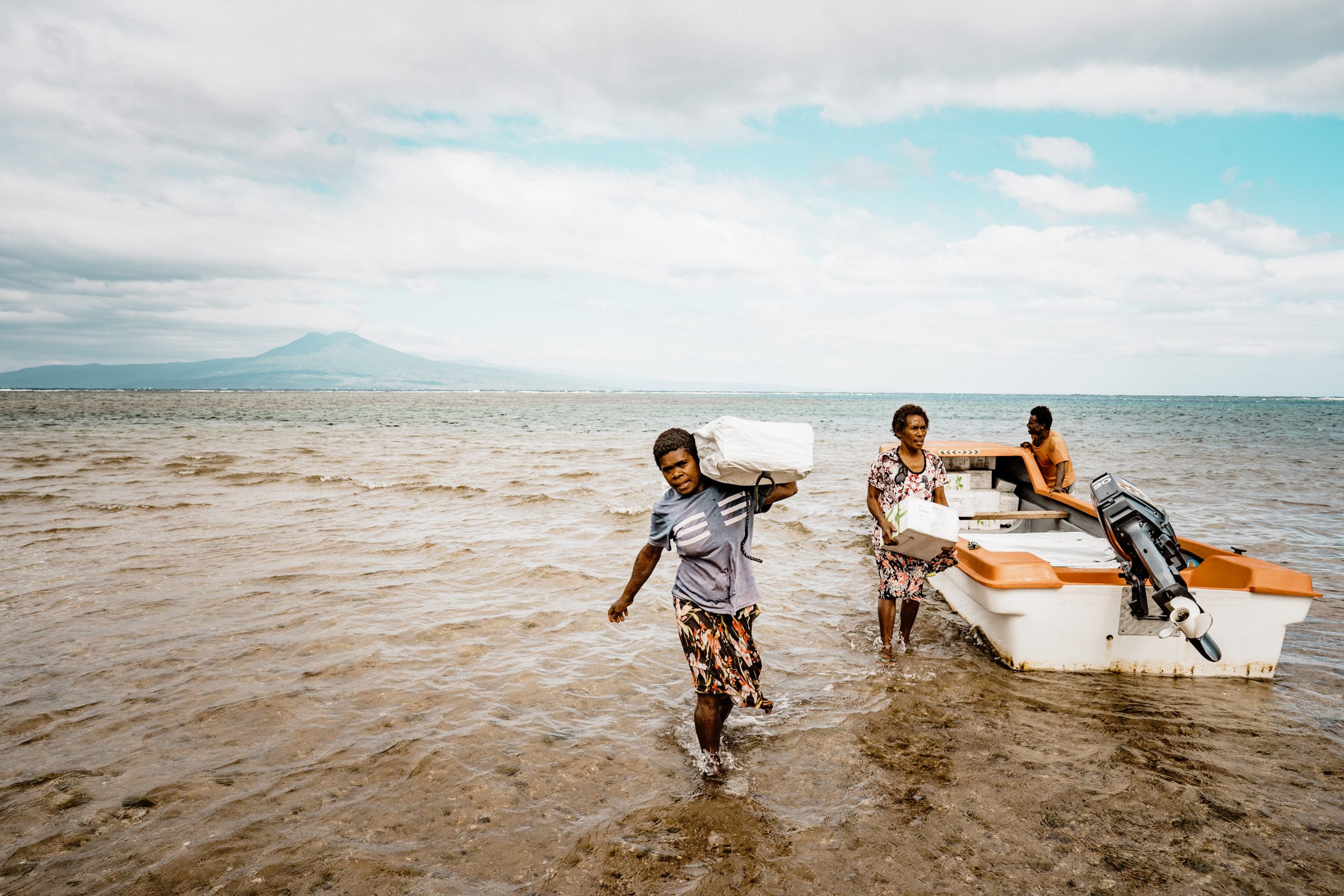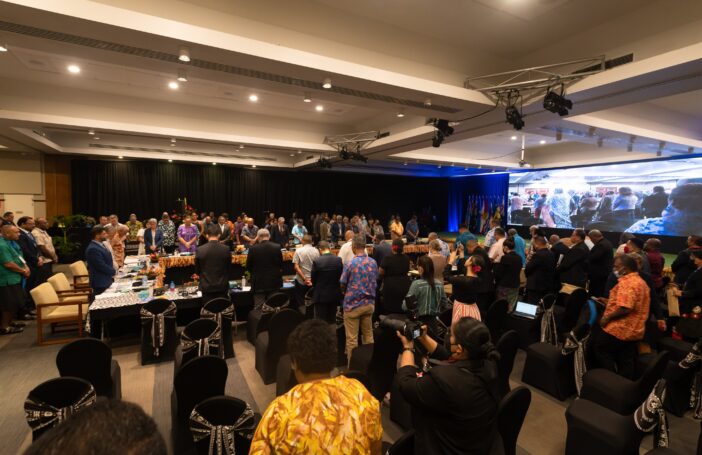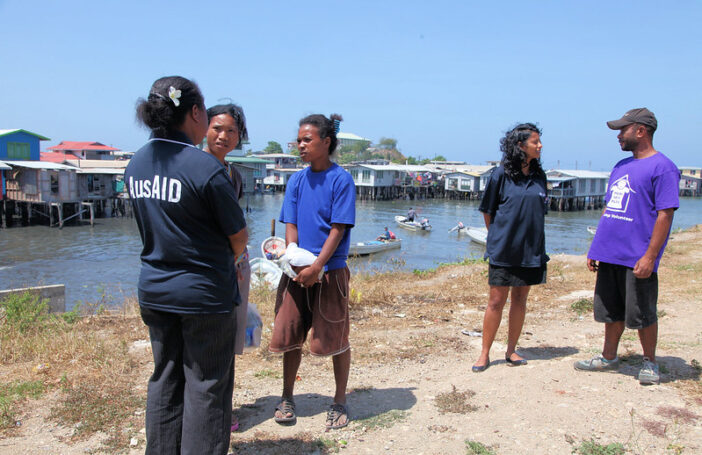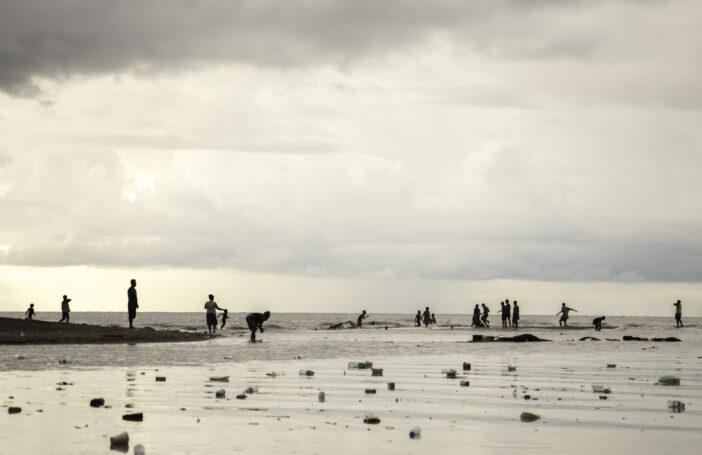Australia has just been found to have failed to adequately protect the rights of Torres Strait Islanders from the impacts of climate change. In a landmark ruling, the UN Human Rights Committee heard arguments from Islanders that their rights had been violated as Australia had failed to assist them to adapt to the impacts of climate change, and it had failed to reduce its greenhouse gas emissions. Whilst Australia’s obligations to its own citizens are made clearer by this decision, what then of our obligations to those beyond our borders?
From Pakistan to the Pacific, as humanitarians serving local communities like those in the Torres Strait, we are facing climate-related disasters with increasing frequency. I recently attended the Asia-Pacific Ministerial Conference on Disaster Risk Reduction (APMCDRR) in Brisbane, where ministers through to frontline humanitarian workers across the Asia-Pacific discussed ways we can do better in responding to natural disasters.
In my 30-year career in aid and development, I have never seen the system so stretched to reach people most in need. The conference statement laid out a number of critical recommendations to governments around increasing finance for climate adaptation, ensuring inclusivity in planning and decision-making, and harnessing the experience of communities, civil society and local institutions. Moving from words to actions will be a collective responsibility and won’t be achieved through business as usual.
As the new Australian government re-engages, demonstrating leadership will require flexibility, patience and predictability in charting a more responsible course of action. Playing catchup will also be required, but there is the need as well for a longer term perspective that puts local people at the centre. Whilst Australia is a big supporter of disaster risk reduction in the region, this alone is insufficient for addressing climate change adaptation.
At CARE Australia, we have many recommendations and insights into how to better support adaptation in the Pacific, alongside and guided by local partners and communities. With the support of DFAT’s Disaster READY program, CARE is working with other Australian NGOs and local partners across the Pacific and Timor-Leste to support more resilient communities. For example, we are supporting people across Vanuatu to ensure they have a voice in their disaster response system. These types of proactive investments in disaster readiness pay off. Based on CARE’s global experience, this is also true of climate adaptation.
CARE, and many of our peers, recognise that preparing for and responding to climate-related and other emergencies is no longer enough by itself. Space must be created to think through how to adapt human infrastructure, social services and livelihoods in the face of escalating climate change. We need to ensure that this is done in a way that is inclusive of all, especially women, girls and other marginalised groups. Evidence shows that making investments early saves not only money, but also lives and livelihoods.
With the support of previously available Australian funding, CARE has built a track record in delivering programming that supports local communities to test and innovate local solutions to adapt to the climate crisis. In the Pacific, this has included support to the remote atolls of Papua New Guinea, helping deliver locally led adaptation, which tangibly led to better food security through more climate-resilient crops.
Mobilising communities has helped to strengthen local capacity for responding to future disasters, and more equitable decision-making between men and women, which is essential to inclusive adaptation. As we can see from the recent floods in New South Wales, engaging and mobilising communities as part of a broader response is essential. This is not different to our work in the Pacific, where we must work directly with local partners to support emergency response.
The principles of locally led adaptation state that we must devolve decision-making to the most local level possible. This recognises that those who see the impacts of climate change every day are best placed to make decisions about their future.
At CARE, we see first-hand how the needs of women and girls are overlooked when emergencies strike, and when adaptation plans are made. We also know they are disproportionately affected when disasters strike. Therefore, we strive to ensure women are at the centre of climate change adaptation. If we don’t do this, we know that outcomes will fall short.
We seek to realise this by working towards inclusive governance at all levels to ensure the meaningful participation of women. A more inclusive government across local levels is key to getting climate financing unlocked to communities. This strengthens the incentive for local communities to also invest their own scarce resources into climate action. In Vanuatu, for instance, our experience was that locally led adaptation must be supported by the national government, providing appropriate infrastructure, including roads, flood control and water supplies. When decisions are made around the cost-benefit of these investments, it pays to ensure women have a say.
Additional climate finance is essential for the region, but what is also required is time. We can’t just drop assets and infrastructure projects on communities. It’s not just about more aid, but also better aid, and the time required to ensure this is genuinely led by local communities themselves, including women. This shouldn’t be an add-on to what we are already doing on disaster response, or an act of greenwashing. As an aid sector, it also means changing our way of doing things in the face of escalating climate shocks, by working hand-in-hand with communities.
So what can Australia do to change course? Well for starters, it can join with the UK, US, Denmark, Netherlands, Ireland and dozens of other countries and endorse the eight principles on locally led adaptation. In supporting locally led adaptation we are likely to better understand local, traditional and indigenous knowledge and solutions.
Over the medium term, Australia can also explore supporting a range of financing modalities, ensuring that resources get to the local level where they are needed. Adding adaptation finance to disaster risk reduction and official development assistance will allow communities and governments across the Pacific the space to think through how to build long-term resilience to the climate crisis, not only the immediate risks and response. Australia needs to develop the trust required of a good donor and equal partner by providing funding that is flexible, patient and predictable.
This is the kind of innovative action from the Australian government that would bolster its climate credentials in seeking to co-host, with the Pacific, the upcoming COP29 in 2024. In the meantime, we can make real and tangible progress in supporting people to live in full enjoyment of their rights, in the places they call home.





